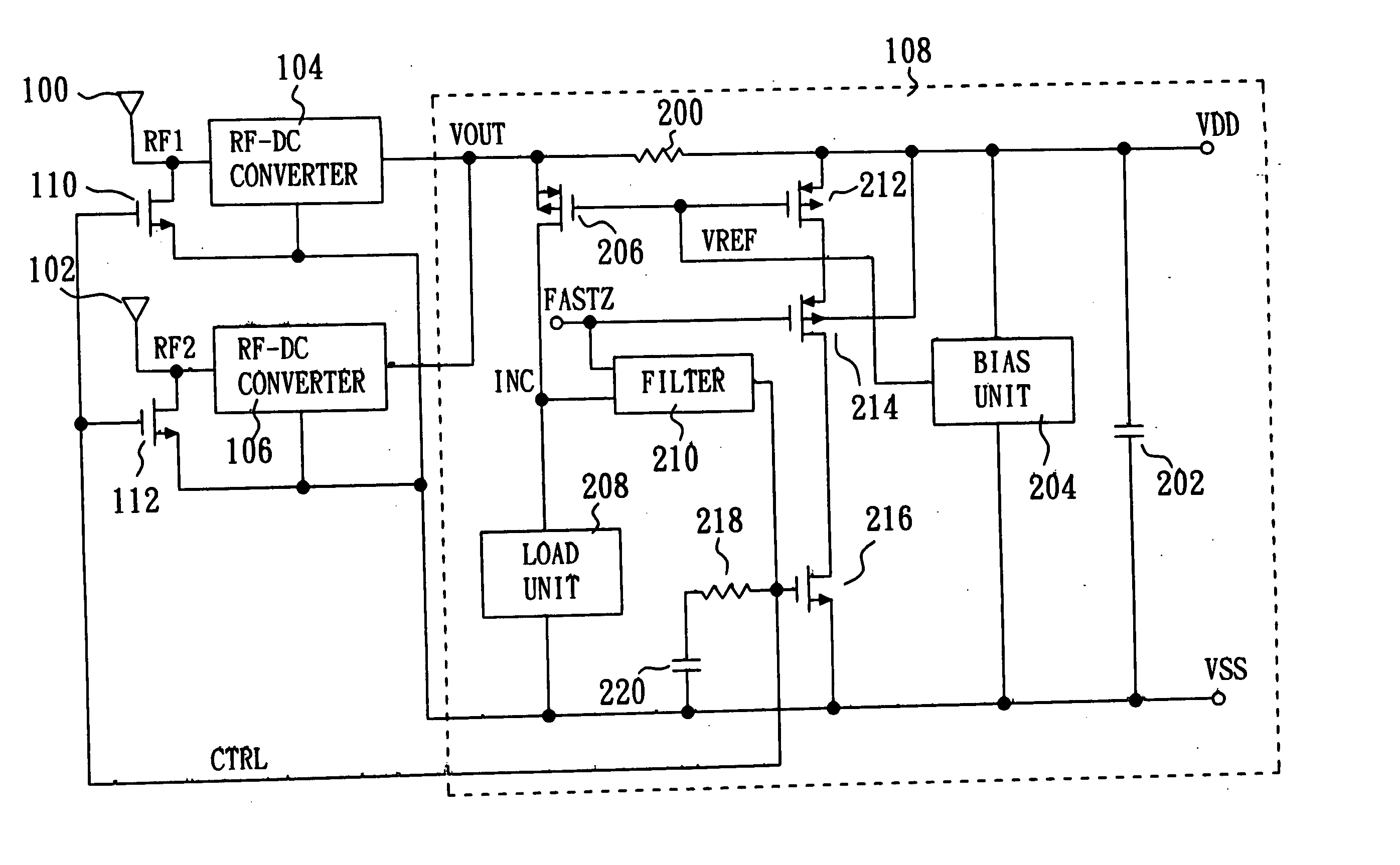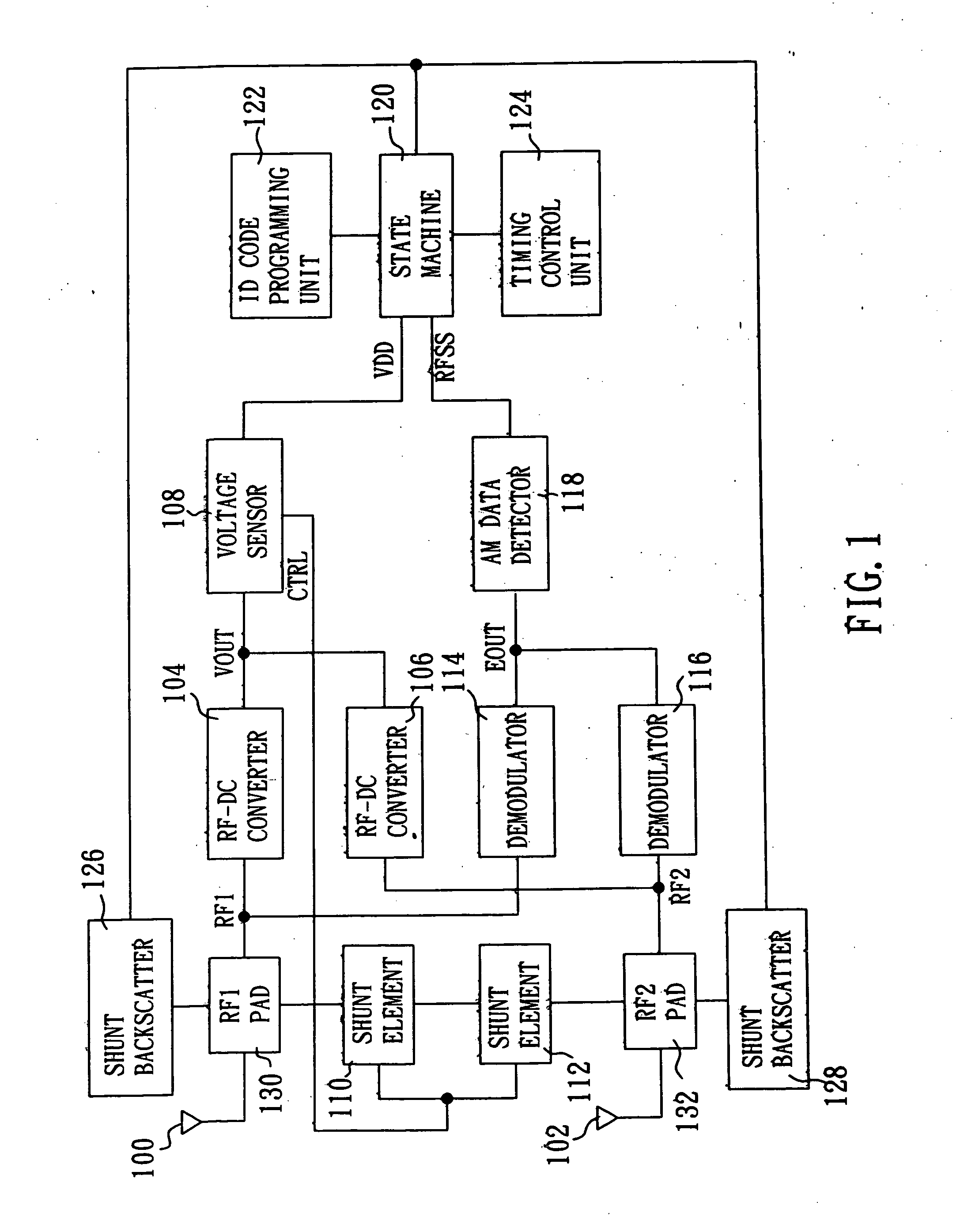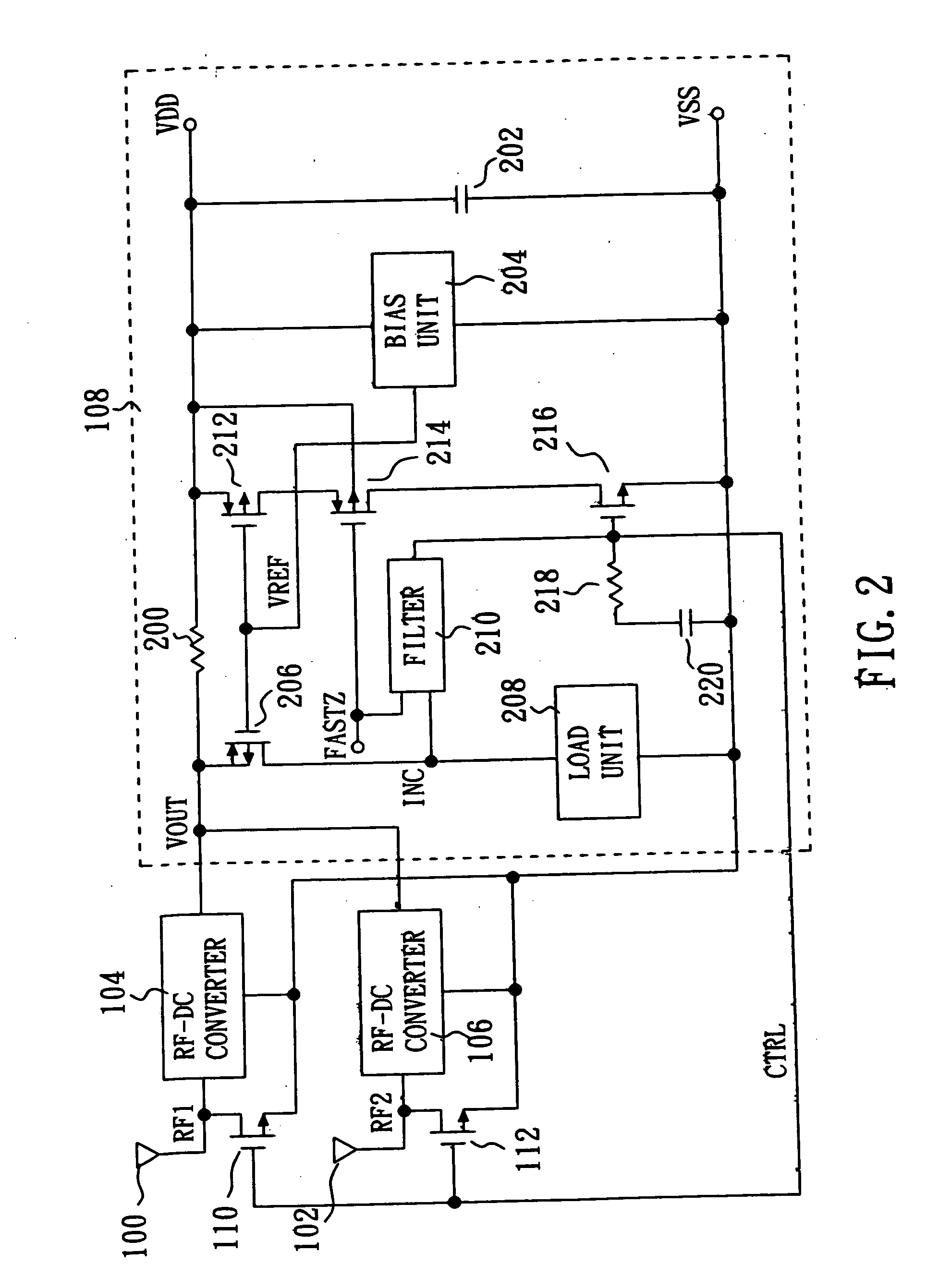AM data recovery circuit
a data recovery circuit and frequency identification technology, applied in the field of rfid chips, can solve the problem of high cost of current available rfid chips configured with external batteries
- Summary
- Abstract
- Description
- Claims
- Application Information
AI Technical Summary
Benefits of technology
Problems solved by technology
Method used
Image
Examples
Embodiment Construction
[0022] Referring to FIG. 1, a block diagram of a passive RFID chip in accordance with the present invention is schematically illustrated. The term “passive” means that the RFID chip is provided with on-chip RF-DC converters for generating the required electrical power for the chip from incoming RF energy. The passive RFID chip of the present invention is provided with a first pad 130 and a second pad 132 operatively connected to a first antenna 100 and a second antenna 102 for receiving RF signals RF1 and RF2, respectively. The first antenna 100 and the second antenna 102 are so arranged that the average gain over all orientations is increased with respect to each antenna separately. Preferably, dipole antenna designs which the first antenna 100 would be oriented at a 90 degree angle with respect to the second antenna 102 on the same plane.
[0023] The passive RFID chip of the present invention can be categorized to an analog portion and a digital portion. As shown in FIG. 1, the ana...
PUM
 Login to View More
Login to View More Abstract
Description
Claims
Application Information
 Login to View More
Login to View More - R&D
- Intellectual Property
- Life Sciences
- Materials
- Tech Scout
- Unparalleled Data Quality
- Higher Quality Content
- 60% Fewer Hallucinations
Browse by: Latest US Patents, China's latest patents, Technical Efficacy Thesaurus, Application Domain, Technology Topic, Popular Technical Reports.
© 2025 PatSnap. All rights reserved.Legal|Privacy policy|Modern Slavery Act Transparency Statement|Sitemap|About US| Contact US: help@patsnap.com



